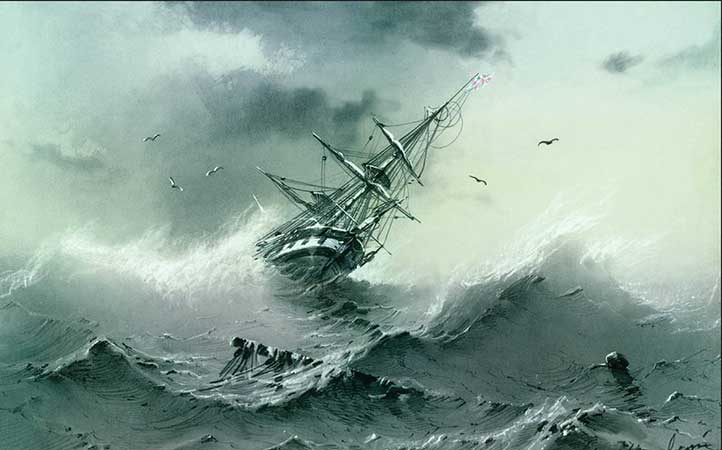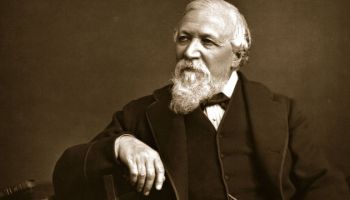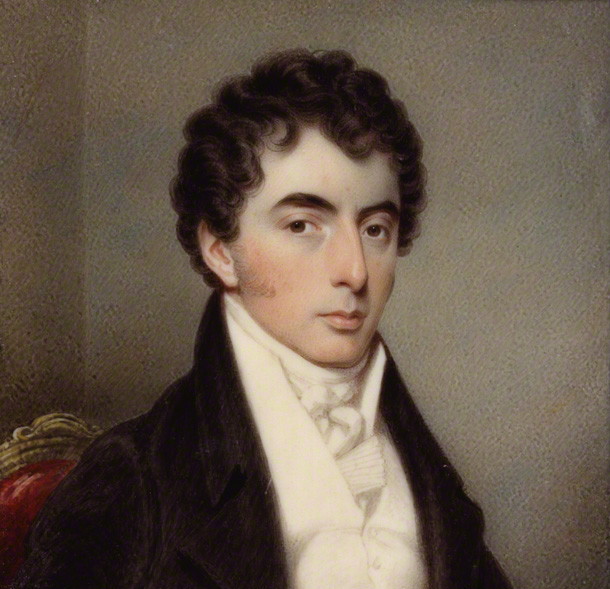About the Poet:
Robert Southey was an English poet whose main literary movement was Romanticism. Robert Southey was born in Wine Street, Bristol, England, to Robert Southey and Margaret Hill. He was educated at Westminster School, London. Although originally a radical supporter of the French Revolution, Southey followed the trajectory of fellow Romantic poets, Wordsworth and Coleridge, towards conservatism. From 1813, until his death in 1843, he was a poet laureate. Southey was also a creative letter writer, literary scholar, essay writer, historian, and biographer. He was also a renowned scholar of Portuguese and Spanish literature and history, translating a number of works from those two languages into English and writing a History of Brazil (part of his planned History of Portugal, which he never completed) and a History of the Peninsular War. Perhaps his most enduring contribution to literary history is the children’s classic “The Story of the Three Bears”, the original Goldilocks story, first published in Southey’s prose collection “The Doctor”.
About The Inchcape Rock:
“The Inchcape Rock” is a ballad published in 1802. The poem consists of 17 quatrains written in rhyming couplets. It tells the story of a 14th-century attempt by the Abbot of Arbroath (“Aberbrothock”) to install a warning bell on Inchcape, a notorious sandstone reef about 11 miles (18 km) off the east coast of Scotland. The poem tells how the bell was removed by a pirate, who subsequently perished on the reef while returning to Scotland in bad weather sometime later. Like many of Southey’s ballads “The Inchcape Rock” describes a supernatural event, but its basic theme is that those who do bad things will ultimately be punished accordingly and poetic justice was done.
The Setting of The Inchcape Rock:
The Inchcape Rock is written in the form of a ballad interwoven with a number of poetical devices to convey a moral lesson- ‘As you sow, so shall you reap.’ The poet has used descriptive and narrative techniques to enhance the effect of the poem.
Stanza-wise Summary of The Inchcape Rock:
The First Stanza describes the calm state of the sea.
The Second Stanza describes the Inchcape Rock on which the waves are gently moving without making any impact on the Inchcape Bell. The waves are rising and falling without moving the Inchcape Bell.
The third stanza talks about the wise Abbot of Aberbrothok who had placed the bell on the Rock to prevent ships from getting shipwrecked during storms and gales. The bell was placed on a buoy. When a storm occurred, the buoy would float and in turn ring the bell which would provide a warning for seamen.
The fourth Stanza describes that When the Rock was full of water by the strong waves during high tide; the bell would ring and warn the sailors against the Rock. The rock is termed as ‘perilous’ meaning dangerous by Southey. Then they used to thank the Abbot of Aberbrothok for his idea of placing a bell to prevent shipwrecks.
The fifth stanza is cheerful in tone. It is a joyful day where the sun was shining brightly and sea birds were circling above, screaming. Their chirping brought joy to all.
The sixth stanza speaks about the buoy which looked like a dark, visible speck on the green ocean. Sir Ralph walked up to his deck and saw the dark speck.
Stanza seven is about Ralph’s excitement experiencing the pleasant day in the spring season. He sang and whistled. He was extremely happy. However, he had a wicked plan in his mind which made him so glad.
We find Ralph looking at the Inchcape Rock with his eyes fixed on it in the eighth stanza. He asks his sailors to take him to the Rock. In his mind, he has already planned to destroy the good work of the Abbot of Aberbrothok.
In the ninth stanza, we find the men had already lowered the boat and they are reaching Inchcape Rock. The Rover is all set to execute his wicked plan. Finally, they reach Inchcape Rock to ‘plague the Abbot of Aberbrothok.’ The wicked Ralph bends down and cuts off the bell from the Inchcape Rock.
In the tenth stanza, we find the bell sinking down making a sound. There were bubbles bursting all around. Ralph says with disregard that no more will anyone thank the Abbot.
In the eleventh stanza, we find the rover becomes rich by looting the wealth and treasures from the shipwrecked ships. He directed his ship towards the shore of Scotland. The ships that came near the Inchcape Rock did not hear the warning bell anymore, as it was cut down. Therefore, the ships suffered shipwrecks and they were looted by Sir Ralph.
The twelfth stanza is about a day where the sun could not be seen. The atmosphere was hazy and strong winds blew the whole day and by evening the storm was clear. The atmosphere somewhat signifies that something was going to happen.
The Rover is seen standing on the deck in the thirteenth stanza. It is dark that he is not able to see the land. He says and hopes that the weather will be pleasant at night.
One of his sailors says that he can hear the roaring of the waves. It seems that the shore is somewhere near about. Another of his sailor wished he could hear the sound of the Inchcape Bell as he was not aware of where they were. This stanza is about the sailors of Ralph who are a little remorseful about cutting down the Inchcape Bell. But it was already too late and we soon find them meeting their fates.
Finally in the fifteenth stanza, the ship of the Rover too crashes against the Inchcape Rock. The ship is struck with a “shivering shock”. The shivering shock given to the vessel was by none other than the perilous Inchcape Rock. They call upon Christ, the son of God that they have met their horrible fate, the Inchcape Rock.
In the sixteenth stanza, Ralph is seen cursing himself in despair and tearing up his hair in frustration. Meanwhile, the waves have started to engulf the ship and it starts to sink beneath the high tide.
In the last stanza of the poem, Inchcape Rock, Ralph the Rover can hear a ‘dreadful’ sound of a ringing bell which resembles the sound of the Inchcape Bell but is actually the death knell, rung by the Devil Himself. The ringing of the bell was once a blessing to the seamen, but in the final stanza we find the sound had been termed as ‘dreadful’ and it has turned into a curse for the Rover. The Rover finally pays for his own deeds.
Some online learning platforms provide certifications, while others are designed to simply grow your skills in your personal and professional life. Including Masterclass and Coursera, here are our recommendations for the best online learning platforms you can sign up for today.
The 7 Best Online Learning Platforms of 2022
- Best Overall: Coursera
- Best for Niche Topics: Udemy
- Best for Creative Fields: Skillshare
- Best for Celebrity Lessons: MasterClass
- Best for STEM: EdX
- Best for Career Building: Udacity
- Best for Data Learning: Pluralsight
















